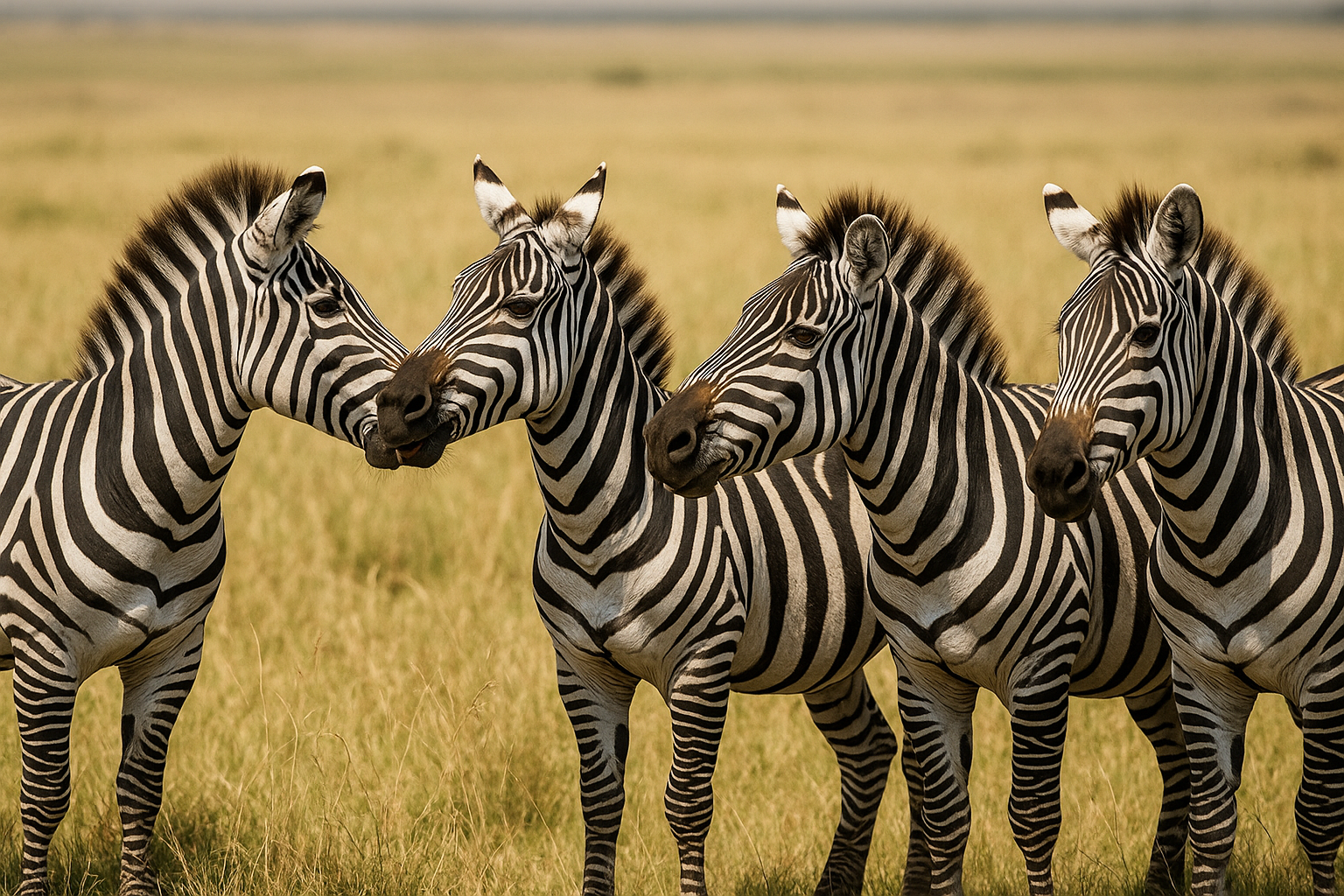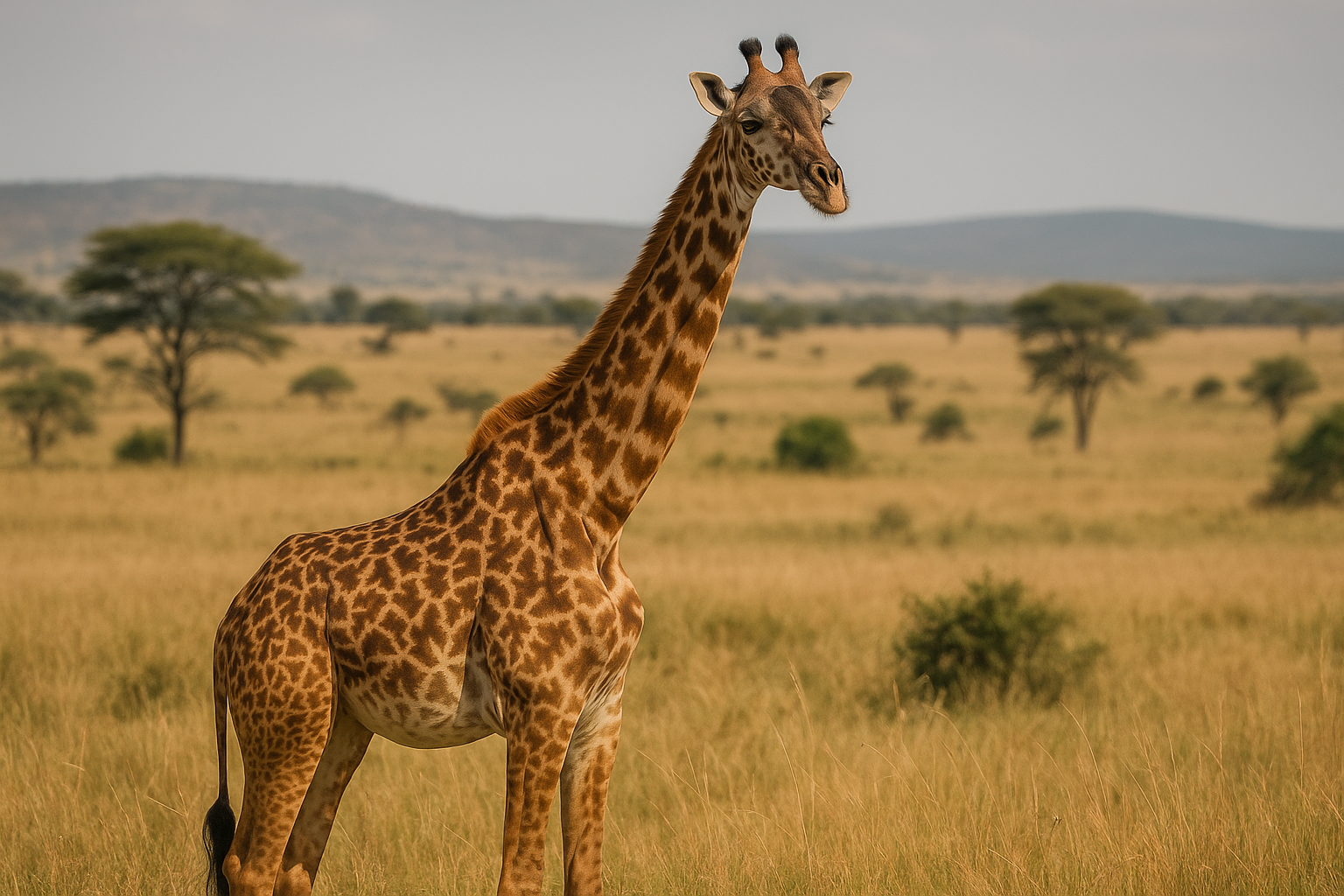Stripes of the Savannah: The Wildlife of the Zebra
I. Introduction: The Walking Mystery of Africa
In the golden grasslands of Africa, where predators stalk and herds thunder, a peculiar figure stands out—striped like a barcode, swift as the wind, and unshakably social. The zebra is more than a pretty coat. It is a master of survival, communication, and adaptation.
To the casual viewer, zebras may seem like painted horses. But in truth, they are something altogether different—wild to their bones, sculpted by evolution to thrive under the sun, among lions and hyenas, and within a constantly shifting ecosystem.
II. Classification: The Horse’s Wilder Cousin
| Taxonomic Rank | Classification |
|---|---|
| Kingdom | Animalia |
| Phylum | Chordata |
| Class | Mammalia |
| Order | Perissodactyla (odd-toed ungulates) |
| Family | Equidae (horse family) |
| Genus | Equus |
| Species | Equus quagga (Plains Zebra) — most common in East Africa |
There are three main zebra species:
-
Plains Zebra (Equus quagga) – Serengeti, Ngorongoro, and beyond.
-
Mountain Zebra (Equus zebra) – Arid southern Africa.
-
Grevy’s Zebra (Equus grevyi) – Northern Kenya and Ethiopia.
The Plains zebra—also known as the common zebra or Burchell’s zebra—is the focus of this article, and is the most widespread and visually familiar species in Tanzania and Kenya.
III. The Stripes: Evolution’s Code
Zebra stripes are one of nature’s most puzzling and beautiful adaptations. No two zebras have the same pattern—like a fingerprint.
Why the Stripes?
-
Camouflage in motion: Confuse predators with motion dazzle.
-
Fly repellent: Disrupt vision of biting insects like tsetse flies.
-
Thermoregulation: Black absorbs heat; white reflects—creating small air currents along the body.
-
Social recognition: Stripes help zebras recognize individuals in the herd.
In the shimmering Serengeti heat, a moving herd looks like waves of illusion, making it hard for predators to single out a target.
IV. Habitat: Life Where the Grass Grows
Zebras are found across savannahs, grasslands, open woodlands, and shrublands. In Tanzania, they’re iconic in:
-
Serengeti National Park
-
Ngorongoro Conservation Area
-
Tarangire and Lake Manyara National Parks
Their distribution closely follows rainfall patterns, as they rely heavily on access to fresh grasses and water.
V. Behavior and Social Life: The Power of the Herd
Zebras are not solitary roamers. They thrive on family bonds, communication, and herd unity.
Structure:
-
Basic group: a harem—one dominant stallion, several mares, and their foals.
-
Multiple harems form large herds, especially during migrations.
Social Behaviors:
-
Constant grooming and nuzzling reinforce bonds.
-
Loud whinnies and barking calls help maintain group coordination.
-
When threatened, zebras circle around foals, forming a barrier of kicking hooves and braying voices.
Zebras are fierce defenders. A stallion will fight off hyenas or wild dogs to protect his herd—and zebras have even been seen attacking lions if cornered.
VI. Communication: Sound, Scent, and Body Language
Zebras are excellent communicators. They use a mix of:
-
Vocalizations: barking, braying, and snorting.
-
Facial expressions: ears back = anger; ears forward = curiosity.
-
Tail flicks and body movements: signal moods or warnings.
-
Scent marking: subtle, but used for identifying kin and rivals.
Their coordination allows them to move as a unit, evade predators, and stay oriented even in chaotic migrations.
VII. Reproduction and Parenting: Unity from Birth
-
Gestation period: ~12–13 months.
-
A mother gives birth to a single foal, which can stand within 15 minutes and run within an hour.
-
Foals memorize their mother’s scent, sound, and stripes within hours.
-
Mares in a harem often synchronize births—creating a nursery dynamic.
Zebra foals grow fast and are fiercely protected by the herd. A predator would have to get past an army of kicking hooves and determined adults to reach a baby.
VIII. The Great Migration: Survival on the Move
Every year, millions of zebras join wildebeest and antelope in the epic Great Migration across the Serengeti-Mara ecosystem.
-
They begin in southern Serengeti in search of fresh grazing.
-
Move northwest toward Grumeti River, facing crocodile threats.
-
Cross into Maasai Mara (Kenya) and return as rains shift.
Zebras often lead the migration—because they eat tougher grasses than wildebeest and act as scouts, paving the way for others.
It is one of Earth’s most spectacular natural events, and the zebra is at its heart.
IX. Predators and Defense: The Striped Survivor
Zebras face constant danger from:
-
Lions
-
Hyenas
-
Leopards
-
Wild dogs
-
Crocodiles (during river crossings)
Defense Mechanisms:
-
Sharp kicks that can shatter bone.
-
Running speeds up to 65 km/h (40 mph).
-
Zigzag running to confuse predators.
-
Group vigilance—when one sees danger, all react.
Even with predators nearby, the zebra has thrived for millennia thanks to its resilience and herd unity.
X. Unique Zebra Facts: Things You Never Knew
-
Zebras can see in color and have nearly 360-degree vision.
-
They sleep standing up, often with others standing guard.
-
Grevy’s zebra is endangered, while plains zebra remains more stable.
-
Zebras have been trained for riding historically—but rarely—because of their wild instincts.
-
Their skin under the stripes is black, not white!
Zebras are wild at heart, and while related to horses, they are fundamentally untamable.
XI. Human Connection: Symbols and Stories
-
In many African cultures, zebras symbolize balance, unity, and wild freedom.
-
They appear on the coat of arms of Botswana, symbolizing equality.
-
Used as mascots for conservation campaigns and eco-tourism brands.
-
The striped coat inspired military camouflage during WWI.
Today, zebras are ambassadors of the wild, inspiring travelers, artists, and conservationists alike.
XII. Conservation: Keeping the Herd Alive
-
IUCN Status: Near Threatened (Plains Zebra)
-
Major Threats:
-
Habitat loss
-
Fencing of migration routes
-
Poaching for meat and skin
-
-
Conservation Solutions:
-
Protected migration corridors
-
Community wildlife conservancies
-
Anti-poaching patrols and education
-
Safeguarding the zebra means preserving a vital piece of Africa’s ecological puzzle.
Conclusion: The Eternal Herd
The zebra’s story is one of movement, resilience, and beauty. With their mesmerizing stripes and powerful herding instincts, they represent the strength of community and the elegance of the wild.
As long as Africa’s grasslands stretch across the horizon, the zebra’s thunder will echo—hoofbeats against earth, stripes flashing beneath the sun, and hearts beating in unison with the rhythms of the land.











No comments:
Post a Comment